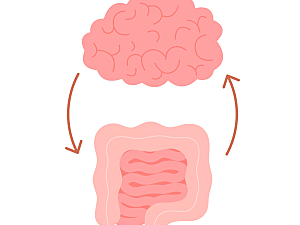Content Body
Both genetic factors and environmental chemicals promote the development of inflammatory bowel disease (IBD) and other autoimmune diseases. Some 200 genetic loci have been associated with IBD, but we lack a way to systematically screen for chemicals that affect the course of the disease. Environmental chemicals that modulate IBD can be used as probes to identify mechanisms of disease pathogenesis and therapeutic targets, as recently described in the context of neuroinflammation in Cell.
Researchers at Brigham and Women’s Hospital are using an integrated systems approach based on genetic information, publicly available databases, zebrafish chemical screens, machine learning and mouse models to identify environmental chemicals that promote intestinal inflammation. In Nature they report on a pathway that normally controls intestinal inflammation and is disrupted by a widely used weed killer, propyzamide.
The authors are Liliana M. Sanmarco, PhD, a research fellow at the Ann Romney Center for Neurologic Diseases, Chun-Cheih Chao, PhD, formerly a research fellow there, Francisco J. Quintana, PhD, a scientist at the Center, and colleagues.
Screening Environmental Chemicals
The Environmental Protection Agency (EPA) maintains ToxCast, a data repository on chemicals used in industry, agriculture and consumer products.
Using ToxCast the research team identified 111 environmental chemicals active in bioassays linked to genetic pathways associated with IBD development, such as tumor necrosis factor, interferon, interleukin-1β, JAK/STAT, peroxisome proliferator-activated receptor, and aryl hydrocarbon receptor (AHR) signaling.
Those chemicals were further evaluated in a zebrafish model of intestinal inflammation. In the end the team identified four chemicals that suppressed zebrafish intestinal inflammation and 13 chemicals that boosted it.
Applying Machine Learning
To identify additional environmental chemicals in the ToxCast database that regulate intestinal inflammation, the researchers trained a machine learning algorithm on the four chemicals that suppressed intestinal inflammation, the 13 chemicals that boosted it, and 13 representative chemicals that had no effect in the initial zebrafish screen.
In brief, of the top 20 chemicals the algorithm predicted to be pro-inflammatory, 11 are used in agriculture. The team selected propyzamide for further study because it’s used on fruits, vegetables, and other crops; in ornamental gardens; and golf courses and sports fields.
Effects of Propyzamide
Propyzamide promoted intestinal inflammation in zebrafish by interfering with AHR anti-inflammatory responses. Normally, AHR suppresses pro-inflammatory responses driven by NF-κB–C/EBPβ signaling:
- NF-κB has key roles in inflammation because it promotes TH1 and TH17 cell differentiation through effects on antigen-presenting cells and T cells
- Activation of NF-κB in dendritic cells and T cells promotes expression of C/EBPβ, a transcription factor that’s been genetically linked to IBD
The next step will be identifying agents that can enhance the anti-inflammatory effect of AHR and therapies that suppress the pro-inflammatory NF-κB–C/EBPβ response; the investigators are actively working in this direction. In addition, the researchers plan to continue their systematic investigation of environmental factors and mechanisms of pathogenesis in IBD and other inflammatory diseases, to identify additional therapeutic targets. Indeed, the investigators are using the platform they developed to screen for novel anti-inflammatory molecules.
